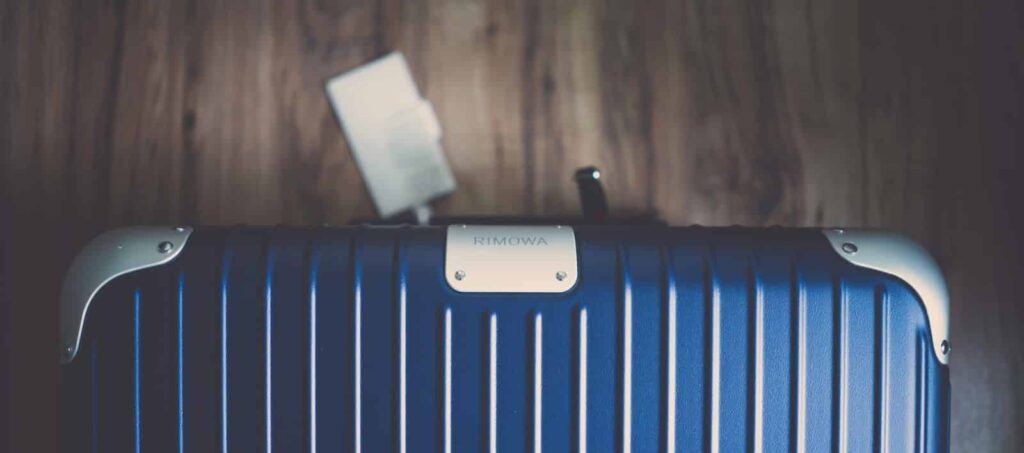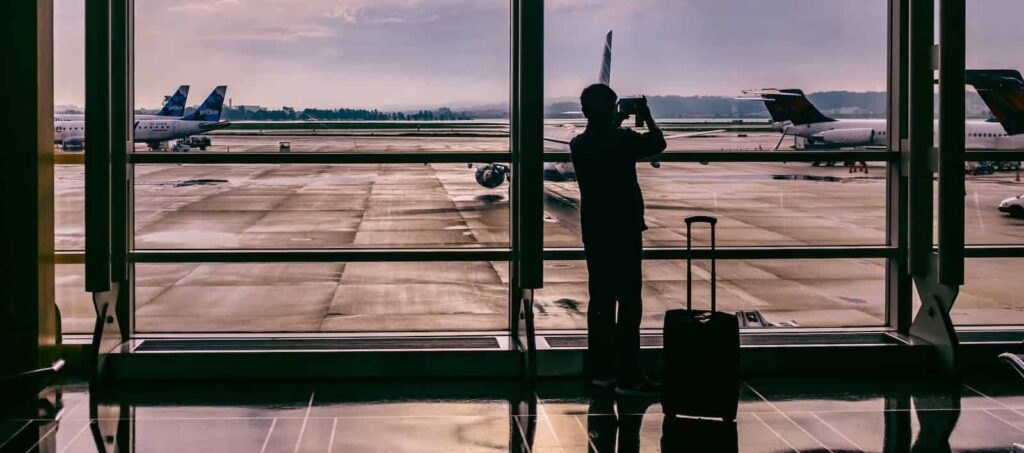Packing for a big trip can be a lot of work. Over our years as professional travelers, we have learned a few things about packing strategically to breeze through security as quickly as possible. However, on a recent trip to India from the USA, we had some major hiccups clearing security for one of our flights. It left us wondering what exactly airport security scanners can see.
In New Delhi heading to Jaisalmer, we had to remove every single item from each of our carry-on bags. Supposedly, the scan clearly indicated that we had a weapon…although we didn’t. While the technology used in each part of the world may vary, this definitely left us a bit skeptical of the security equipment that is used at least in some places!
This post will explain what the airport baggage scanners can see, both in your hand luggage at the security checkpoint and in your checked baggage after you drop it at the check-in counter.
What Can Security Scanners See in Carry-on Bags?
There are several different kinds of scanners used on carry-on bags. The vast majority of them use electromagnetic waves to create an x-ray image of what is in your luggage. These scans can provide a 3D image to TSA agents that helps them to identify potential threats.
It is important to realize that the scans only show the shapes of the items in the baggage. They do not provide colors or too vivid of detail.
Their sole purpose is to help TSA officers efficiently assess the contents of each bag. This ensures that there’s nothing that could pose a threat to travelers in the airport terminal or on the airplane.

Types of Items that Security Scanners Detect in Carry-on Baggage
There are usually five types of items that security officers look for. They are liquids, powders, batteries, sharp objects, and organic materials.
Each of these can be detected by the baggage scanners. A TSA agent will likely pull any flagged baggage for manual inspection. Despite common thinking, the advanced imaging technology of airport scanners can see both metal objects and non-metallic objects.
Liquids
The Transportation Security Administration does not allow liquids to pass through the security screening process. The only exception is if they are in containers of 3.4 ounces or less, or they are for a baby. This policy is firm, and there is no wiggle room.
TSA does not have the time to test every liquid that passengers want to bring through security, so they throw away all liquids in containers of more than 3.4 ounces. This is why you should wait to get your Starbucks until after security!
Powders
Powders are detected by the TSA scanners because of their consistency. They may be swabbed by a TSA officer once a bag passes through the scanner.
The x-ray machines themselves have no way to detect what the powder is. But many illegal substances are transported in powder form and a TSA agent may choose to inspect the powder once it is flagged by the machine. We have traveled with protein powder and other legal health supplements in the past and have not been stopped for manual inspection, but this may not always be the case.
Lithium Batteries
Batteries are picked up very vividly by baggage scanner machines used in the airport security process. These scans are diligently assessed by security. This is why laptops are required to be removed from carry-on luggage before the screening unless you have TSA Pre-Check.
As their batteries are very large, the battery can disrupt the clarity of the rest of the x-ray image. As long as you separate all electronics before the scanning so that the TSA officers can clearly see what they are, there is a slim chance that a device or battery will be flagged for further inspection.
However, if you leave any large electronic devices in your luggage, they will absolutely be flagged for further inspection. To avoid any hiccups, we always remove all of our electronics from our bags before scanning regardless of their size.
TSA says that anything the size of a cell phone or smaller can remain in the bag. We remove these items as well to minimize our chances of being manually searched.
Sharp Objects
For obvious reasons, passengers are not allowed to fly with sharp objects. Sharp objects pose a real security threat, and security agents in the United States take this threat very seriously. Razors, scissors, nail clippers, knives, and letter openers are all objects that will likely be flagged and confiscated by security.
While it may be hard to imagine using a set of nail clippers as a lethal weapon, TSA is very firm in this rule. We have actually had nail clippers confiscated several times – even baby-sized nail clippers in a diaper bag. If you have a pocket knife that you like to carry or a razor you like to travel with, be sure to leave it in your checked bag.
Organic Materials
While you are allowed to bring food and other organic matter through security in US airports, it is likely to be examined by security officers. Most scanning machines can detect biological material (think fruits and vegetables) pretty clearly. While you’d be hard-pressed to find pineapple on a list of forbidden or dangerous items, it’s probably going to get inspected and swabbed by the airport security personnel.

What Can Security Scanners See in Checked Bags?
Checked bags, sometimes referred to as hold luggage, go through a very similar security screening as carry-on bags. The key differences are that the list of restricted contents is much shorter, and you will not need to take your own bags through the screening. Once you drop your bag off at the check-in counter, it slides along the conveyor belt to a security screening of its own.
This screener will likely use the same x-ray or CT scanner technology as TSA uses on your carry-on baggage and personal items. Regardless of the type of scanner used, your baggage will either pass inspection or be pulled aside for a closer look by the security staff. The good news is that this check is much less intense, as there are fewer restrictions on checked baggage.
Checked Bag Screenings Are Less Restrictive
As long as your baggage doesn’t contain any restricted items, it will pass inspection and be moved to a separate area where it will wait for your plane to arrive. To alleviate any doubt, the agent at the check-in counter will probably list off a bunch of baggage restrictions to you. They will ask you to confirm that your bag does not contain any prohibited or illegal items.
Can Baggage Scanners Detect Drugs or Other Illegal Substances?
While new scanners have gotten very advanced, they are still not necessarily capable of determining the substances contained in baggage. They can identify whether an item is organic or metallic. They can also identify its shape, structure, and density.
But they cannot specifically identify an item’s substance. So, technically speaking, TSA scanners can’t distinguish drugs from other powders or liquids.
With that being said, TSA absolutely has the capability to identify drugs and other illegal substances. The scanner might not see the difference between two powders, for example, but it can certainly find all powders. Based on the powder’s density and location, TSA agents can guess pretty accurately whether or not it is a risk that should be inspected further.
On top of that, many airports use canine units to sniff out potential drugs or other illegal substances. While possession of illegal drugs is always a crime, transportation of them through an airport is an especially bad one.

What Can Full-Body Scanners See During Airport Security?
While your luggage goes through security screening in an airport, you have to go through your own screening. All minor and major airports are equipped with full body scanners that check the human body itself. This is to make sure that passengers aren’t carrying any illegal objects on their person while entering the terminal.
From backscatter x-ray scanners to millimeter wave scanners, these checks use x-ray radiation to observe what passengers are carrying apart from the bags that go on the conveyor belt.
Airport Scanners and Health Risks
Both main types of airport body scanners – millimeter-wave scanners and backscatter scanners – provide aviation security with a safe and non-invasive way to verify passengers before they enter the secure area of the terminal.
Despite common misconceptions, modern airport scanners provide no health risks and are not able to see inappropriately through passengers’ clothes. In reality, they just produce a rough image that highlights any areas of the passenger that seem to contain items that don’t normally appear in passengers and their clothes.
If you have things in your pockets or are passing through with a belt buckle, these scanners will notice. However, the magnetic fields produced by the scanners can’t detect much more than just potentially dangerous materials.
Thanks for reading our post on what airport scanners can see in your luggage and on your person as you pass through security.
What is the craziest thing you have seen people bring through security? Drop a comment below.







